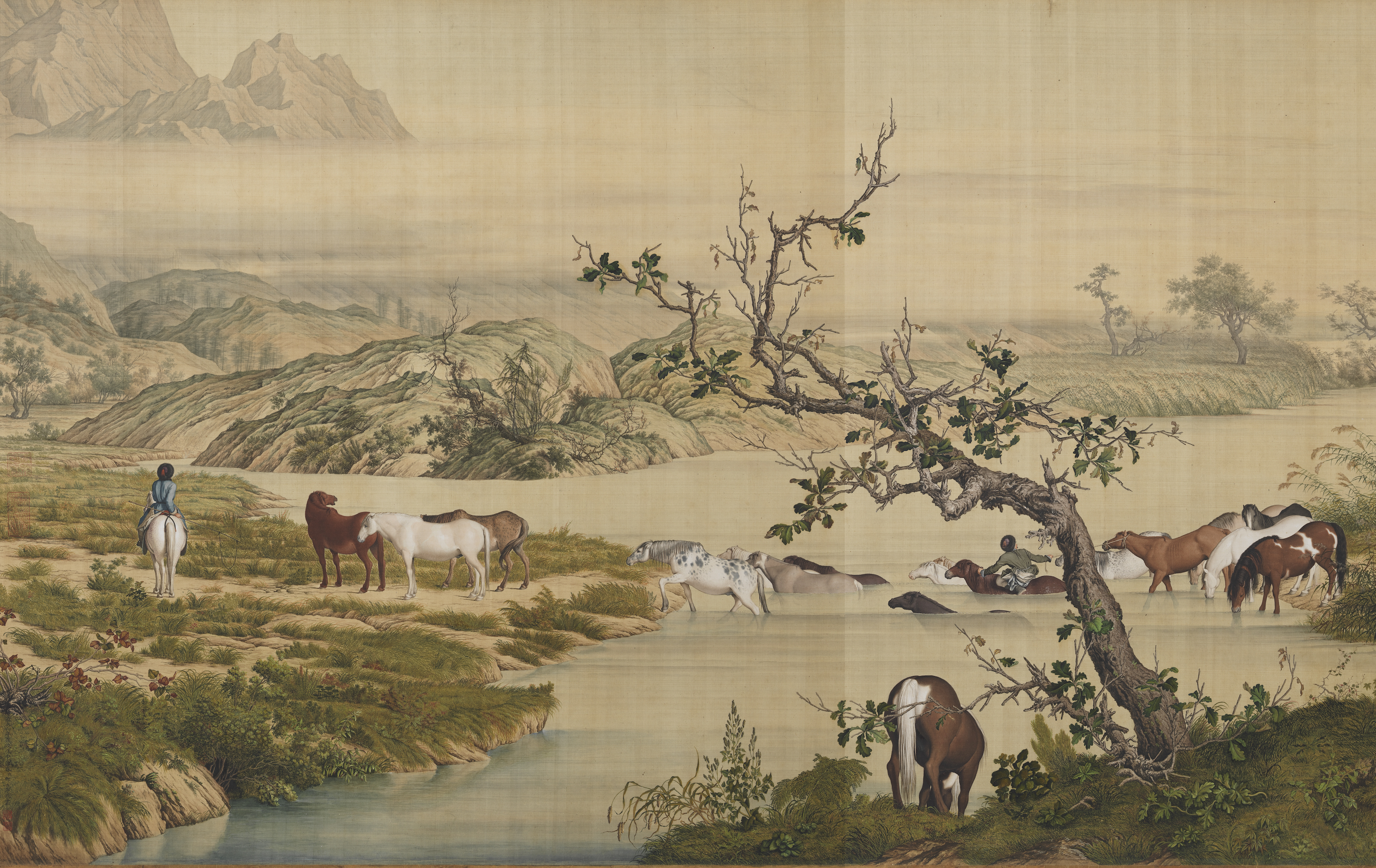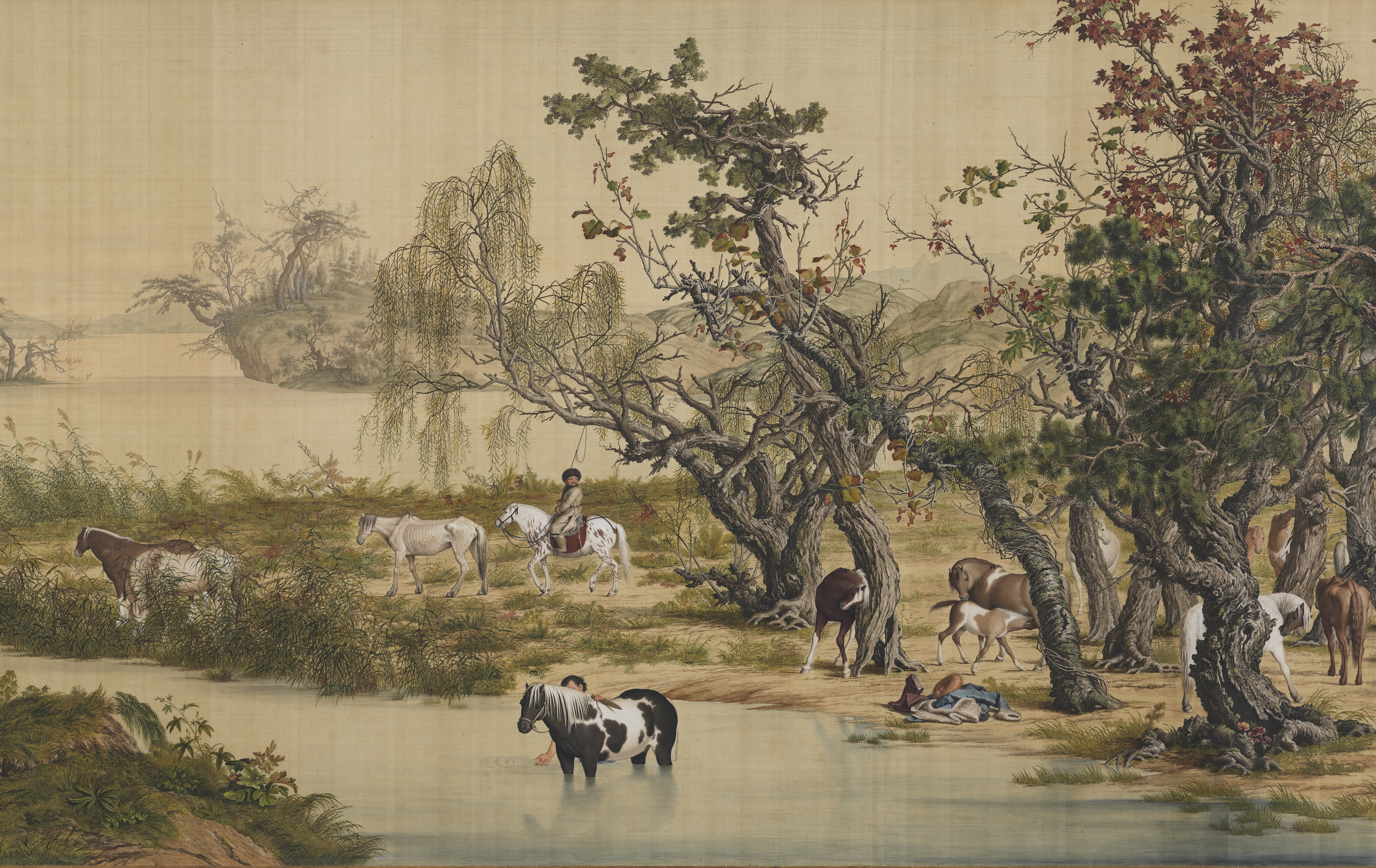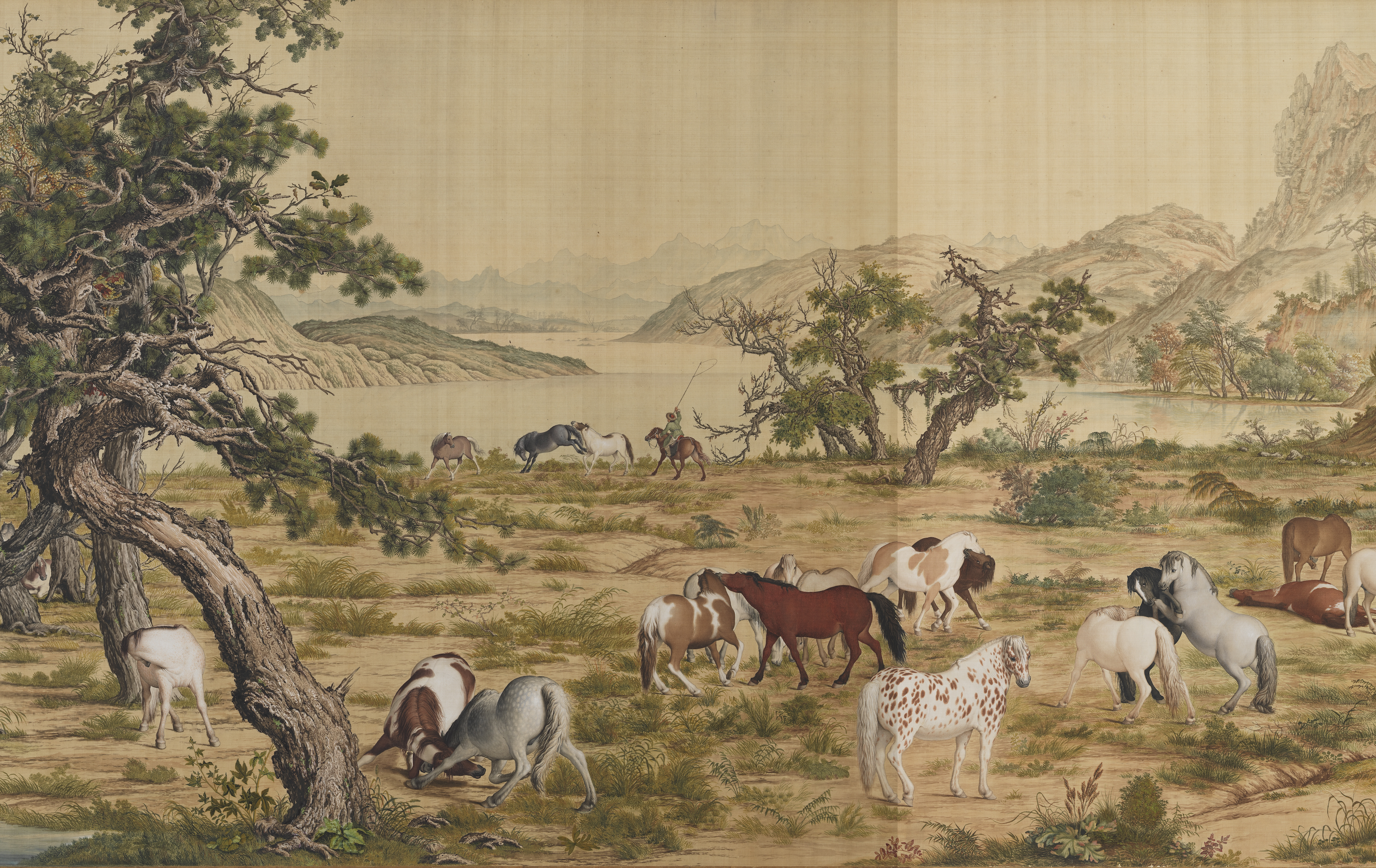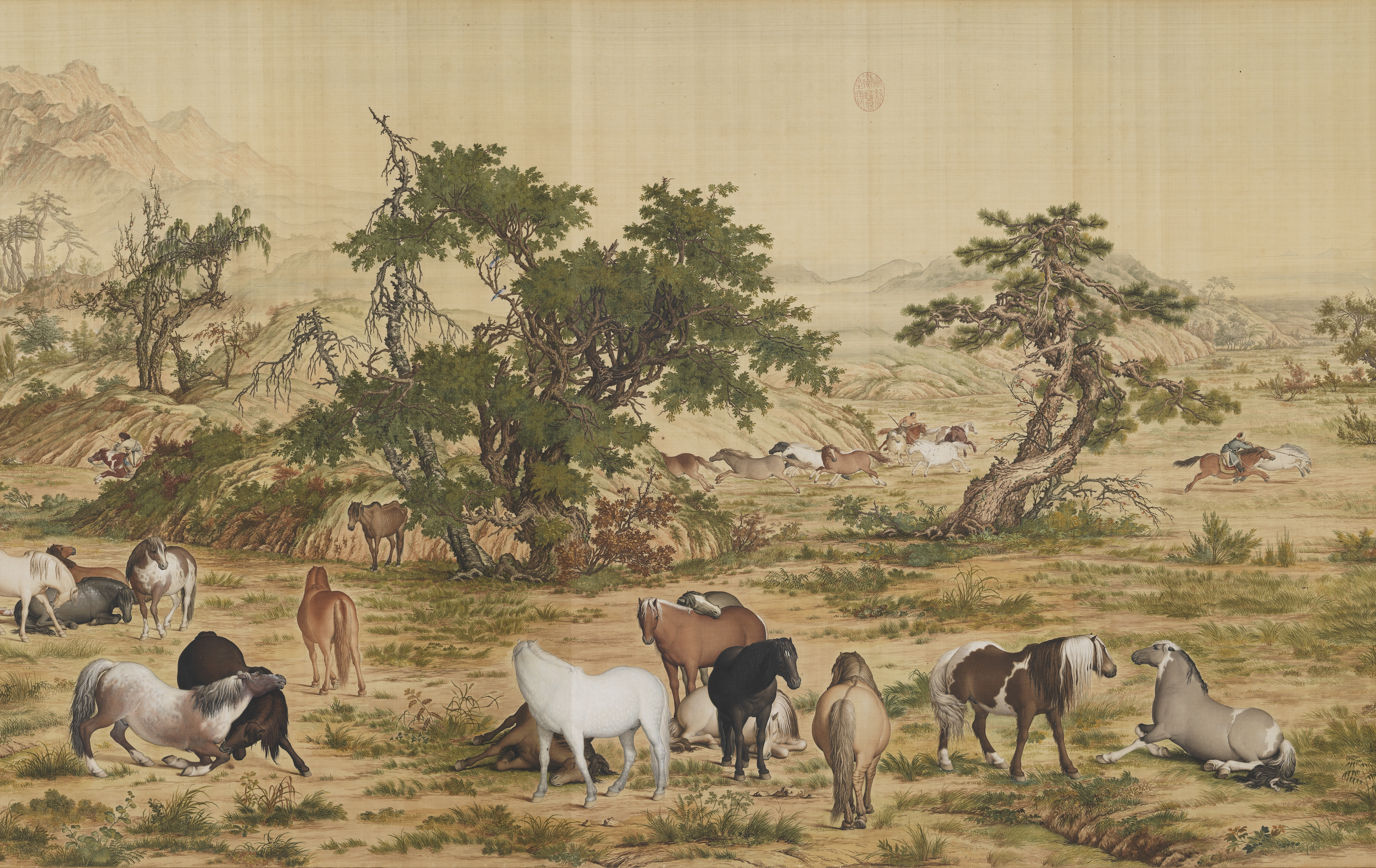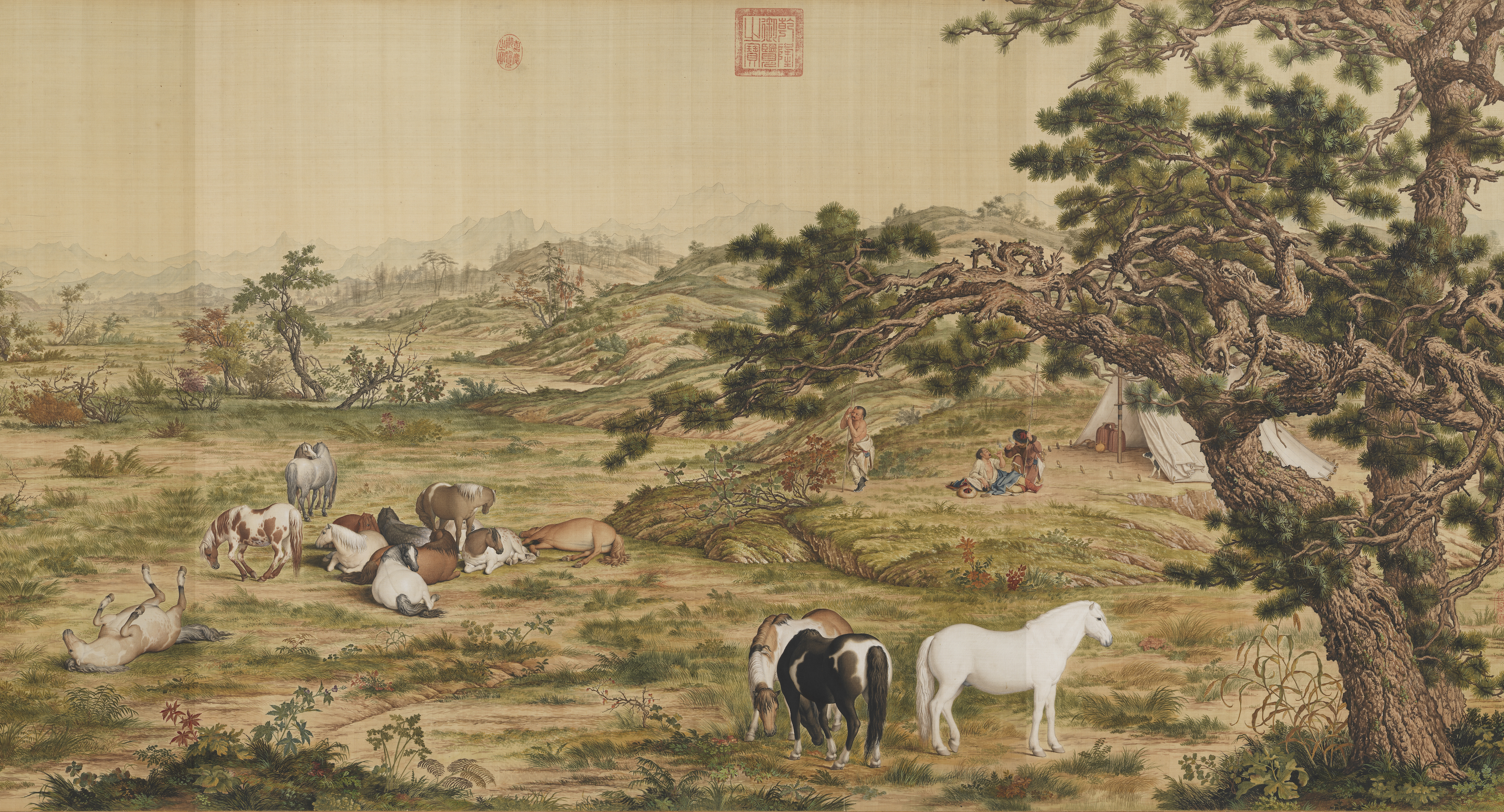The Emperor's One Hundred Horses: A New Media Animation of the One Hundred Horses
- Artist: The National Palace Museum, Digimax
Length 3'49"
Giuseppe Castiglione painted many horse farms. His horses are so life-like thanks to the shadows and fine details that brought realism to a new height.
To remain faithful to the original painting, the latest high-end animation technology was incorporated to render images of horses engaging in playful activities, wrestling, resting, galloping, and fording. Amazing images of the horses are vividly portrayed to the audience.
Original work of art
One Hundred Horses by Giuseppe Castiglione
- Lang Shining (Giuseppe Castiglione, 1688-1766), Qing dynasty
- Handscroll, ink and colors on silk, 94.5 x 776 cm
This handscroll, completed in 1728, depicts a hundred steeds in various poses within a horizontally stretching landscape to create a majestic scene of pasturing. The horizon line for the landscape is maintained at a two-thirds height throughout, creating for a complete and contiguous sense of space across the surface of the painting and the scenery. The trees and other motifs are also shown in correct proportion to suggest a spatial effect of level distance. The technique in the painting differs from that of traditional Chinese art, with the artist, Giuseppe Castiglione, utilizing areas of light and dark colors for the forms to suggest their volumetric quality and to express a sense of light and shadow as well. As for the horses, though their forms are outlined with lines, they are mostly modeled with areas of color. Castiglione, however, consciously subdued the shadows for the forms to preserve their solidity but without creating a dramatic contrast between light and dark. This work can be seen as Castiglione's way of actively integrating the qualities of two disparate painting traditions.
